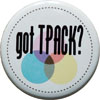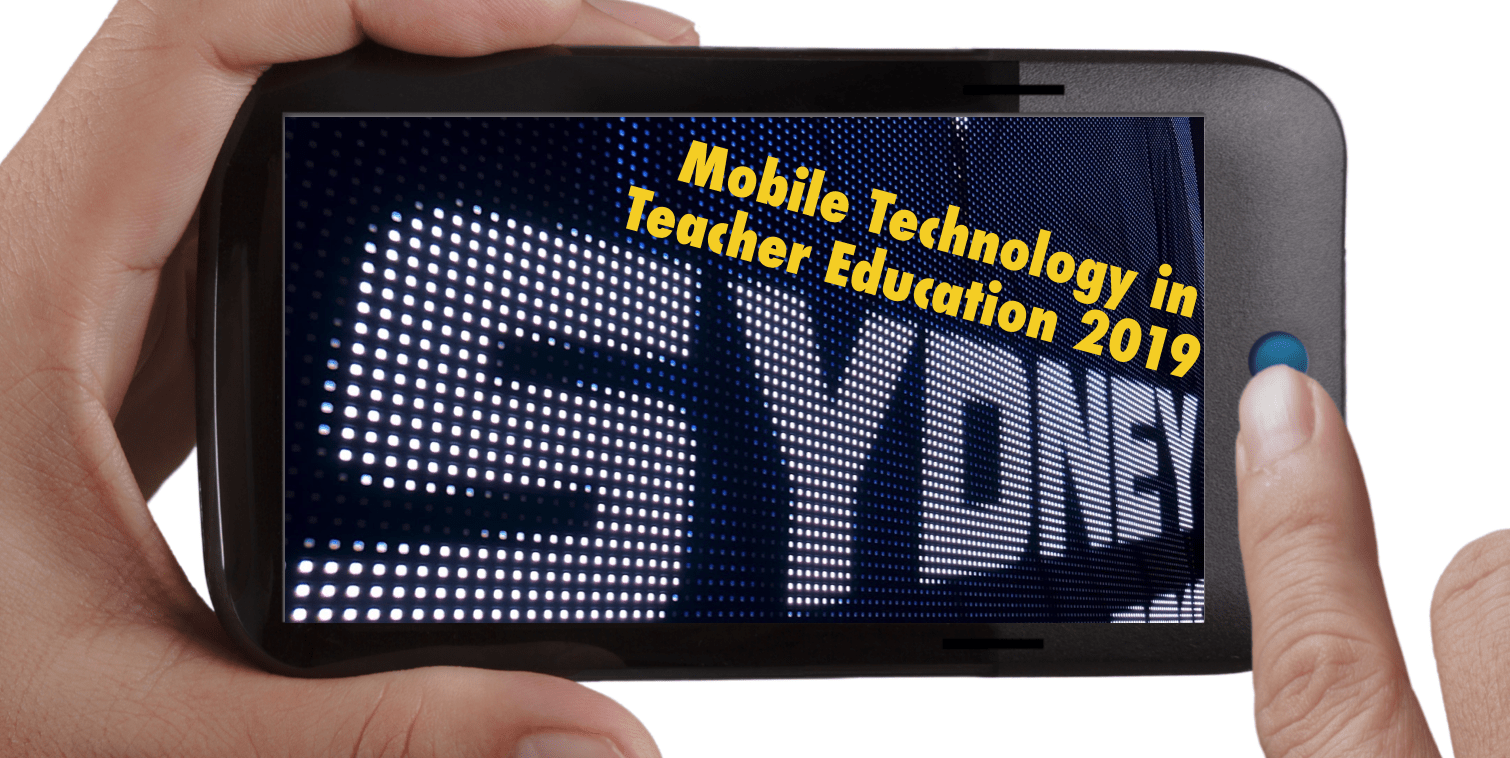
|
TPACK Newsletter, Issue #5: October/November 2009 Welcome to the fifth edition of the TPACK Newsletter, now with 568 subscribers (representing a 15% increase during the last two months!), and appearing bimonthly between August and April. If you are not sure what TPACK is, please surf over to www.tpack.org to learn more. If the brightness on your screen is always at full intensity, you can’t tell what’s highlighted.†– Patricia Sueltz, IBM (On deciding which problems to tackle.)
In this Issue: -2. Introductory blurb -1. Gratuitous Quote about Technology 3. Recent TPACK Presentations 5. TPACK Handbook Reviews –. Un-numbered miscellaneous stuff at the end 1. Recent Journal Articles and Chapters about TPACK Doering, A., Scharber, C., Miller, C. & Veletsianos, G. (2009). GeoThentic: Designing and assessing with Technological Pedagogical Content Knowledge. Contemporary Issues in Technology and Teacher Education, 9(3), 316-336. Abstract: GeoThentic, an online teaching and learning environment, focuses on engaging teachers and learners in solving real-world geography problems through use of geospatial technologies. The design of GeoThentic is grounded on the technology, pedagogy, and content knowledge (TPACK) framework as a metacognitive tool. This paper describes how the TPACK framework has informed the authors’ design endeavors and how a set of assessment models within GeoThentic can be used to assess teachers’ TPACK. Doering, A., Veletsianos, G., Scharber, C., & Miller, C. (2009). Using the Technological, Pedagogical, and Content Knowledge framework to design online learning environments and professional development. Journal of Educational Computing Research, 41(3), 319 – 346. Abstract: In this article we sought to understand how social studies teachers’ metacognitive awareness of their technological, pedagogical, and content knowledge (TPACK) changed after their participation in a program that consisted of: (a) professional development for the use of an online learning environment; and (b) using an online learning environment in their classrooms. Inservice teachers who went through the TPACK-based program experienced considerable movement within the TPACK diagrammatic knowledge domains and expressed positive and encouraging comments regarding their knowledge domains portrayed within the TPACK framework. Quantitative and qualitative results are shared along with implications of designing professional development, online learning environments using TPACK, and advancing the TPACK framework itself. Grandgenett, N., Harris, J., & Hofer, M. (2009). Grounded†technology integration: Math. Learning & Leading With Technology, 37(3), 24-26. (Watch future 2009-2010 issues of L&L for more Learning Connections†articles about world languages, science, K-6 literacy, and English language arts TPACK-based learning activity types, written with collaborators Marcela van Olphen, Meg Blanchard, Denise Schmidt, and Carl Young.)
Harris, J., & Hofer, M. (2009). Instructional planning activity types as vehicles for curriculum-based TPACK development. In C. D. Maddux (Ed.). Research highlights in technology and teacher education 2009 (PP. 99-108). Chesapeake, VA: AACE. Abstract: Teachers’ knowledge is situated, event-structured, and episodic. Technology, pedagogy and content knowledge (TPACK) – one form of highly practical professional educational knowledge – is comprised of teachers’ concurrent and interdependent curriculum content, general pedagogy, and technological understanding. Teachers’ planning – which expresses teachers’ knowledge-in-action in pragmatic ways — is situated, contextually sensitive, routinized, and activity-based. To assist with the development of teachers’ TPACK, therefore, we suggest using what is understood from research about teachers’ knowledge and instructional planning to form an approach to curriculum-based technology integration that is predicated upon the combining of technologically supported learning activity types within and across content-keyed activity type taxonomies. In this chapter, we describe such a TPACK development method.
Holmes, K. (2009). Planning to teach with digital tools: Introducing the interactive whiteboard to pre-service secondary mathematics teachers. Australian Journal of Educational Technology, 25(3), 351-365. Abstract: Teaching is a complex endeavour that requires teachers to meld knowledge about the nature of learners, pedagogical strategies and discipline content. In recent years an increasing variety of educational technologies are finding their way into the school classroom, including the widespread acceptance of interactive whiteboards (IWBs). The emerging literature on IWB use is mixed, with no clear verdict on the merits of this technology in relation to teaching or student learning outcomes. However, as this equipment is fast becoming standard in a growing number of classrooms, it is important for pre-service teachers to be familiar with its features, potential difficulties and to have had experience in developing lesson activities that utilise the technology. This study examines the lesson activities developed by a group (n=13) of final year undergraduate secondary mathematics pre-service teachers. The analysis is guided by the Technological Pedagogical Content Knowledge (TPCK) framework of Mishra and Koehler (2006). The study reveals that the pre-service teachers were able to plan effectively to integrate IWB features within their mathematical lessons and demonstrated developing TPCK as a result. They found that the primary benefits of the technology related to its potential to engage students with varied visual representations and virtual manipulatives which can aid conceptual understanding.
Polly, D., & Mims, C. (2009). Designing professional development to support teachers’ TPACK and integration of Web 2.0 technologies. In T. T. Kidd & I. Chen (Eds.), Wired for Learning: Web 2.0 Guide for Educators (pp. 301-316). Charlotte, NC: Information Age Publishing.
The September 2009 issue of TechTrends included several articles focused on TPACK. The following articles were published in that issue: Barbour, M., Rieber, L. P., Thomas, G., & Rauscher, D. (2009). Homemade PowerPoint games: A constructionist alternative to WebQuests. TechTrends, 53(5), 54-59. Abstract: Students are required to use PowerPoint to construct home made content-based games. To construct these games, students write a game narrative or story (i.e., a short overview or context for the game that must fit on a single PowerPoint slide) and develop questions to provide the appropriate level of challenge to their games. These three pedagogical skills are required of students as they use a technology-based tool to construct games in a specific content area, and form the intersection envisioned by Mishra and Koehler with their TPCK framework. This combination of technological, pedagogical, and content knowledge provides a scalable example of good teaching with technology. Cox, S., & Graham, C. R. (2009). Diagramming TPACK in practice: Using an elaborated model of the TPACK framework to analyze and depict teacher knowledge. TechTrends, 53(5), 60-69. Abstract: The introduction of the TPACK model by Mishra and Koehler (2006) has had a profound impact on the field of educational technology. It has inspired teachers, teacher educators, and educational technologists to reevaluate their knowledge and use of technology in the classroomÅ Thus far, the explanations of technological pedagogical content knowledge and its associated constructs that have been provided are not clear enough for researchers to agree on what is and is not an example of each construct. Mishra and Koehler and others have provided definitions of TCK, TPK, and TPACK that articulate to some degree the centers of these constructs, however the boundaries between them are still quite fuzzy, thus making it difficult to categorize borderline cases. In order to help clarify these boundaries and facilitate study of TPACK in practice, this paper presents the key findings from a conceptual analysis of the TPACK framework. Graham, C. R., Burgoyne, N., Cantrell, P., Smith, L., St. Clair, L., & Harris, R. (2009). TPACK development in science teaching: Measuring the TPACK confidence of inservice science teachers. TechTrends, 53(5), 70-79. Abstract: In this study we piloted an instrument for measuring confidence levels in four of the seven TPACK knowledge constructs: TPACK, TPK, TCK, and TK. The instrument was useful in helping SciencePlus program coordinators to see significant increase in the TPACK confidence of participants over the eight-month duration of the program. Analysis of the data also helped program coordinators recognize that more could be done to help classroom teachers develop TCK confidence by doing more to help them learn about content-specific technologies that are used in doing science. Mishra, P., Koehler, M. J., & Kereluik, K. (2009). The song remains the same: Looking back to the future of educational technology. TechTrends, 53(5), 48-53. Abstract: The TPACK framework emphasizes the role of teachers as decision makers who design their own educational technology environments as needed, in real time, without fear of those environments becoming outdated or obsolete. Using this approach, teachers do not attend to specific tools, but instead focus on approaches to teaching that endure through change in technologies, content, or pedagogies. Teachers with flexibility of thought, a tolerance for ambiguity, and willingness to experiment can combine traits that perfectly design and tailor their own educational content, pedagogical, and technological environments. David Passig recently wrote on the topic of melioration, or “the competence to borrow a concept from a field of knowledge supposedly far removed from his or her domain, and adopt it to a pressing challenge in an area of personal knowledge or interest” (2007). According to Passig, melioration is a skill that affords teachers the flexibility to experiment with a vast array of technologies to meet their specific educational needs. Novel frameworks and concepts like TPACK and Passig’s melioration are starting to look at educational technology in a new way. These new perspectives focus on overarching cognitive skills, competencies, and creativity rather than technical understanding and functional knowledge of specific technologies. Nelson, J., Christopher, A., & Mims, C. (2009). TPACK and Web 2.0: Transformation of teaching and learning. TechTrends, 53(5), 80-87. Abstract: Web 2.0 technologies provide possibilities for sharing and building knowledge. Teachers who facilitate collaborative and interdisciplinary projects build on the unique strengths of individual students and encourage the sharing of ideas. In essence, they are teaching students to be life-long learners. The Internet and Web 2.0 technologies afford teachers ready access to collaborative, authentic opportunities for students to engage in meaningful experiences related to the curriculum. TPACK-competent teachers exhibit best practices in pedagogy, content, and technology. Polly, D., & Brantley-Dias, L. (2009). TPACK: Where do we go now? TechTrends, 53(5), 46-47. Abstract: TPACK gives a holistic perspective of the knowledge associated with effectively integrating technology into learning environments, accounting for what teachers know and what teachers do. TPACK provides a robust framework for thinking about teachers’ knowledge related to integrating technology effectively into learning environments. Articles in this special issue have raised questions related to our design of teacher education and professional development programs to develop the TPACK of K-12 teachers, and ways to research or examine teachers’ TPACK and innovation adoption. 2. TPACK in the News An article by Senior Editor Laura Devaney in the Wednesday, September 9, 2009 issue of eSchool News, entitled Reinventing Education,†described San Diego’s public schools’ five-year plan to reinvent the way students are taught.†The district’s new professional development plan is formed around†TPACK.
In Which Came First – The Technology or the Pedagogy?†an article in the September 9, 2009 issue of THE Journal, Dian Schaffhauser asked the question, Why is a generation of teachers more knowledgeable about technology than any before it arriving in classrooms with little understanding of how to teach with it?†Glen Bull and Ann Thompson were interviewed. TPACK was used as a way to understand answers to this question. 3. Recent TPACK Presentations Mario Kelly presented a paper entitled Assessing Teachers’ Ability to Integrate Technology into Teaching†at the 21st Annual Seminar of the Japan-United States Teacher Education Consortium (JUSTEC), in Honolulu, Hawaii in September, 2009. The paper reviewed current TPACK assessment practices and included recommendations for future research and practice. A .pdf of the conference’s program is available online. Patrick Martin, Instructional Systems Specialist for Educational Technology with the U.S. Department of Defense Education Activity schools headquarters in Washington, DC, posted an October presentation that “focuses on technology integration and the effective use of the ET [Educational Technologist] in DoDEA classes.” The model for ET use is based upon TPACK. Patrick recommends, “So that ETS can focus on TPACK, they will: – work with teachers and students in the classroom. – work to find areas in DoDEA content standards that are a natural fit for existing technology tools. – work with teachers in planning lessons and provide job-embedded training to further teacher confidence with available technology tools. ETs will not: – monitor SIS maintenance. – compile SPSS and other school standard data. – fix hardware and software problems.” In another ITEC paper entitled TPCK: What Is It and How Can It Help You?†Carl? Andersen (We’re not sure if this is the correct name; our apologies!) discussed the TPACK framework based on the work of Punya Mishra and Matthew Koehler, and demonstrated practical ways for participants to apply TPACK ideas in their own classrooms. 4. TPACK Development A TPACK Tutorial used at Brigham Young University was written by Nicky Burgoyne and Charles Graham, and was based upon some of the results of Suzy Cox’s 2008 dissertation, A conceptual analysis of Technological Pedagogical Content Knowledge†(.pdf). John Hunt writes about a tool he uses in his role as Adjunct Senior Lecturer at the University of the Sunshine Coast. I have found useful in getting teachers to think about how best to integrate ICT into their work. As much as I loathe templates, this works as a stop-gap measure to help teachers see the links between technology and pedagogy (visible thinking). As this way of thinking is internalized, teachers will discard this scaffold.†Dan Maas, Chief Information Officer for Littleton Public Schools, in Littleton, CO shares a [TPACK-based] reflection guide we have provided [to] our principals as part of our Inspired Writing project in which all 5th grades, and all 6th and 9th grade language arts classrooms are 1:1 environments. We are targeting writing scores and 21st century skills. This site has some blog comments from [participating school] principals, too. On October 20th, 2009, the Master of Teaching program at the University of Toronto held its second annual Technology-Enhanced Learning workshop. The workshop theme this year was structured around the TPACK model. Teacher candidates were challenged to think beyond simply adopting new technology, towards appropriate and meaningful use given the local contexts in which they will be teaching. Some of the technologies/topics examined included: wikis, weblogs, media literacy, Photoshop, Comic Life, SMART Board, graphing calculators, e-learning tools (MOODLE, OISE Knowledge Commons), WISE, visualization tools in science, assistive technology (SMART Ideas, Kurzweil), and Garage Band. For additional information see: http://mtprogram.wikispaces.com/, or you may contact Kim MacKinnon directly. 5. TPACK Handbook Reviews
…were published in: Special Education Technology Practice, March/April 2009, 11(2), p. 12. Issues in Teacher Education, Fall 2009. p. 117. The Handbook was reviewed by Pamela A. Redmond. 6. TPACK Research-in-Progress Karin Forssell, PhD candidate at Stanford University’s School of Education, studies inservice teachers’ TPACK. She is using a modified version of Schmidt, et. al.’s TPACK survey (.pdf), and is developing a TPCK Beliefs Scale as well. Anyone working on similar projects is encouraged to collaborate. Contact Karin and learn more about Karin’s work at: http://www.stanford.edu/~forssell. Are you researching TPACK? Please consider adding a description of your research methods to the TPACK wiki’s Researching TPACK†section. 7. Learning and Doing More with TPACK
Interested in learning more about TPACK or getting more involved in the TPACK community? Here are a few ideas: a. Visit and contribute to the TPACK wiki at: http://tpack.org/ b. Join the TPACK SIG at: http://site.aace.org/sigs/tpack-sig.htm c. Join and contribute to the TPACK Google group at: http://groups.google.com/group/tpack/ d. Review and provide feedback on the TPACK Learning Activity Types at: http://activitytypes.wmwikis.net/ e. Access past issues of the TPACK Newsletter at: http://punyamishra.com/research/tpck/newsletter-archive/ f. Or at: http://mkoehler.educ.msu.edu/tpack/ g. View recent (but unedited) mentions of TPACK (including tweets) on the Web at Matt Koehler’s “All Things TPACK”. Feel free to forward this newsletter to anyone who might be interested in its contents. Even better, have them subscribe to the TPACK newsletter by sending a blank email to sympa@lists.wm.edu , with the following text in the subject line: If you have a news item that you would like to contribute to the newsletter, please send it to: tpack.news.editors@wm.edu If you are interested in volunteering to help run the newsletter (we need help!), send email to: tpack.news.editors@wm.edu Standard End-Matter Have a great winter break, everyone! We’ll be back in late December with issue #6 of the TPACK Newsletter. – Judi, Matt, Mario, and Punya Judi Harris, Chair, College of William & Mary |
|||
|
|




0 Comments